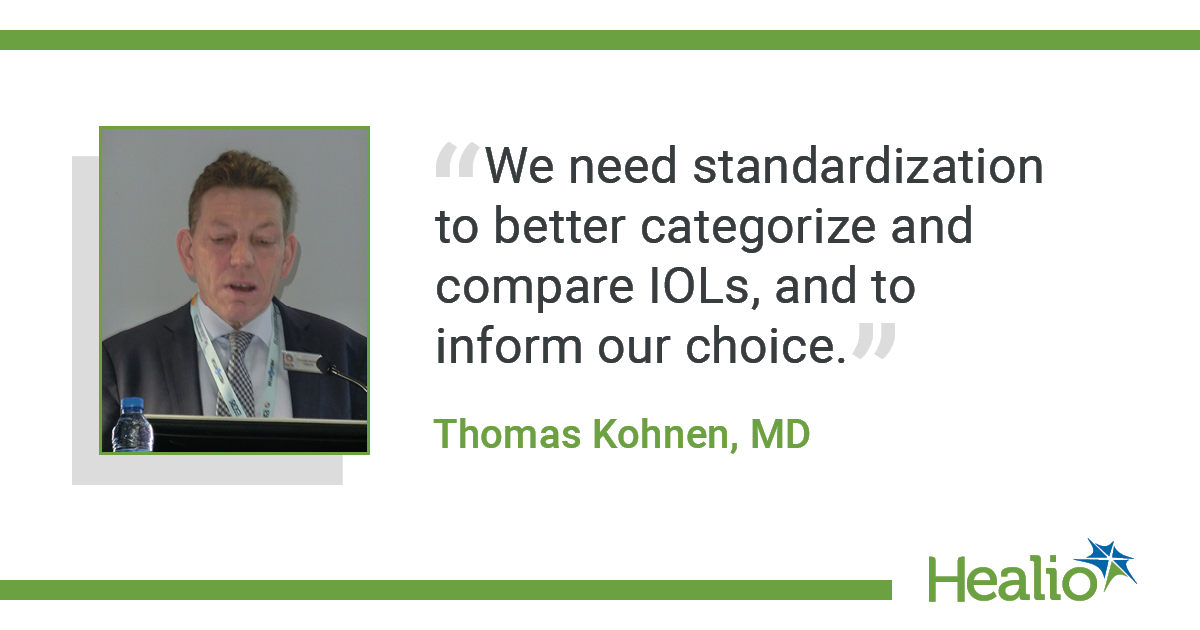Standardized measures of visual disturbance needed to inform IOL choice

MARRAKECH, Morocco — As the number of advanced technology IOL options continues to increase, standardized tools and methods for the assessment of halo, glare and light distortion are needed to facilitate cross-study comparisons and inform clinical decision-making, according to one speaker.
“Extended range of vision without significant visual disturbances is the goal of multifocal and EDOF lenses, but there is currently no consensus on the most appropriate way of measuring these symptoms,” Thomas Kohnen, MD, said at the European Society of Cataract and Refractive Surgeons Winter Meeting.
A literature review was conducted at Goethe University in Frankfurt, Germany, to assess the currently used subjective and objective tools for measuring visual disturbances in cataract patients implanted with trifocal and extended depth of focus lenses.

Subjective measurements include a number of questionnaires known as patient-reported outcome measures (PROMs).
“The first-generation PROMs had important shortcomings, such as lack of weighting, limited sensitivity and limited relevance to different populations. The second-generation Rasch-based PROMs and validated PROMs improved upon traditional PROMs, and then the third-generation item banking computer-based questionnaires introduced new advantages, such as reduced test burden and increased flexibility and accuracy,” Kohnen said.
Another group of tests includes halo and glare simulators. They capture realistic scenarios, relatable to the patient’s subjective experience, but rely on the patient’s memory and can therefore be deceptive. Mixed results have been reported with these methods.
Light distortion analysis, vision monitoring and Aston halometer multifunctional systems are the new frontier.
“These methods still need refinements and validation, but we will rely more and more on them in the future,” Kohnen said.
“Reliable, validated PROMs coupled with repeatable, reliable objective methods have the potential to allow for a holistic evaluation of photic phenomena. We need standardization to better categorize and compare IOLs and to inform our choice,” he said. – by Michela Cimberle
Reference:
Kohnen T, et al. Measures of visual disturbance in patients receiving extended-depth-of-focus or trifocal intraocular lenses. Presented at: European Society of Cataract and Refractive Surgeons Winter Meeting; Feb. 21-23, 2020; Marrakech, Morocco.
Disclosure: Kohnen reports he is a consultant for Alcon, Carl Zeiss Meditec, Johnson & Johnson and Hoya.
